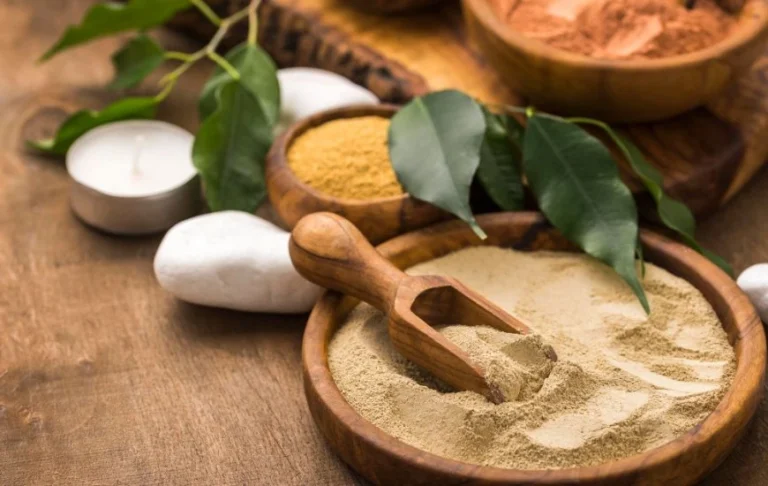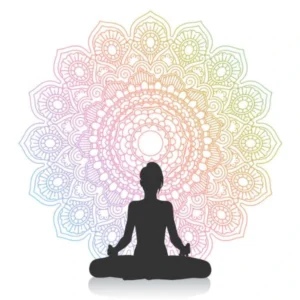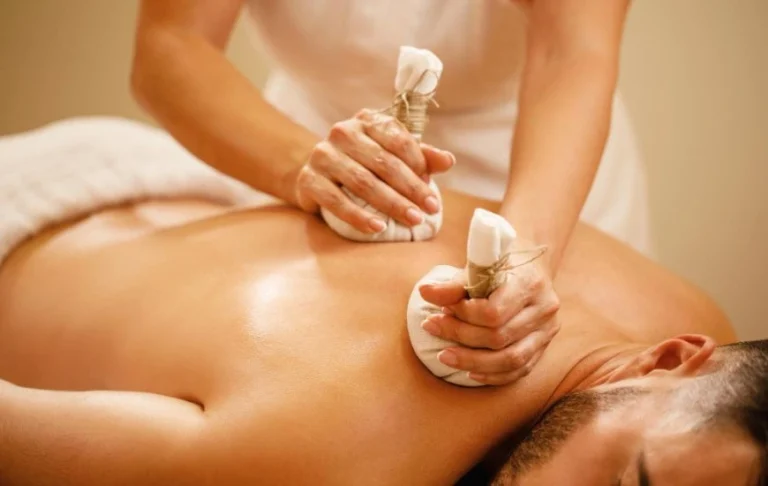Welcome to Herbalhills Wellness
What is Ayurveda Panchakarma Treatment?

Ayurveda and Panchakarma have been ancient healing practices for thousands of years to promote overall health and wellness.
Ayurveda is a traditional system of medicine that originated in India, while Panchakarma is a comprehensive detoxification therapy that is an integral component of Ayurvedic medicine.
Ayurveda is based on the principle that health and wellness depend on a delicate balance between the mind, body, and spirit. On the other hand, Panchakarma is a purification process designed to remove toxins from the body and restore balance to the doshas, or energies that govern bodily functions.
In this article, we will delve into Panchakarma therapy’s specifics and discuss its numerous benefits, from improved metabolic function to reduced stress levels.
Through this exploration, you will understand how Ayurvedic Panchakarma treatment can be a valuable addition to the overall health and wellness routine.
Contents
Importance of Panchakarma in Ayurveda

Panchakarma is one of the main treatments used in Ayurveda, and it involves five different cleansing processes designed to eliminate toxins from the body.
Panchakarma is important for overall wellness and health because it helps to remove impurities from the body that can lead to disease. By eliminating these impurities, the body can better absorb nutrients from food, allowing for improved digestion and absorption of vitamins and minerals.
Additionally, panchakarma helps to restore balance in the body by restoring harmony between mind, body, and spirit. This allows for improved mental clarity, emotional well-being, and physical health.
Overall, Ayurvedic Panchakarma treatment effectively improves overall wellness and health by removing toxins from the body while restoring balance in the mind, body, and spirit.
The Five Elements and Three Doshas

Ayurvedic medicine is based on the belief that everything in the universe comprises five elements: water, earth, fire, air, and space ether. These five elements are believed to be in varying degrees in all humans.
Within Ayurveda, every individual is believed to have a unique combination of these elements, referred to as their dosha.
There are three main doshas: Vata, Pitta, and Kapha. Each dosha represents a unique combination of the five elements and has characteristic traits.
- Vata Dosha :
It is composed primarily of air and space, and its characteristics include lightness, coldness, dryness, and movement.
Individuals with a dominant Vata dosha tend to be creative and energetic but may experience digestive problems and anxiety.
- Pitta Dosha :
It is composed primarily of fire and a small amount of water, and its characteristics include warmth, oiliness, and intensity.
Individuals with a dominant Pitta dosha tend to be goal-oriented, driven, and like challenges. Pitta individuals may, however, struggle with anger and inflammation.
- Kapha Dosha :
It is composed primarily of water and earth, and its characteristics include heaviness, coldness, and stability.
Individuals with a dominant Kapha dosha tend to be grounded, compassionate, and nurturing. However, they may struggle with sluggishness and weight gain.
The balance of these doshas within an individual is believed to significantly impact overall health and well-being.
When one or more doshas become imbalanced, it can result in physical or emotional health problems. Ayurvedic treatments, including Panchakarma therapy, are designed to restore balance to the doshas and promote overall health and wellness.
The five elements and three doshas essentially provide a framework for understanding each individual’s unique constitution and how imbalances in these elements and doshas can impact health and well-being.
Ayurvedic medicine can help individuals achieve optimal health and well-being by promoting balance within the doshas.
What is Panchakarma?
Panchakarma is a Sanskrit term for “five actions,” It refers to a comprehensive detoxification therapy used in Ayurvedic medicine.
The purpose of Panchakarma is to remove toxins from the body and promote balance and harmony between mind, body, and spirit.
The fivefold purification therapy of Panchakarma involves a series of procedures designed to remove toxins from the body.
Each type of Panchakarma treatment is tailored to the individual’s needs and has benefits and considerations.
These procedures include:
- Vamana :
Vamana medically induced induces vomiting to eliminate excess mucus and toxins from the upper respiratory tract.
This treatment should not be used in cases of heartburn, ulcer, high blood pressure, or any other serious medical condition.
- Virechana :
Virechana is a purgation process that uses herbal medications to eliminate toxins from the gastrointestinal tract. It helps to improve digestion and expel impurities from the body.
Virechana should be done under the supervision of an experienced practitioner, as improper administration could lead to adverse reactions.
- Nasya :
Nasya involves the administration of herbal oils and medicines through the nasal passages to treat conditions such as migraines, sinusitis, allergies, asthma, blocked nose, etc. Nasya should not be used if there are signs of fever or cold.
- Basti :
Basti is an ayurvedic enema technique that helps to cleanse the colon and relieve digestive disorders such as constipation and dysentery.
It can also help to improve skin health by removing toxins from the skin cells through sweat glands in warm water baths during Basti treatments.
- Raktamokshana :
Raktamokshana is a blood purification therapy that removes toxins and impurities from the bloodstream by drawing out some blood with needles or leeches.
This procedure should only be performed under the supervision of experienced practitioners trained in this technique.
Panchakarma removes toxins from the body by breaking down and releasing them from their stored locations.
The different stages of Panchakarma treatment are designed to open up the body’s channels, release stored toxins, and eliminate them from the body through various elimination pathways.
The stages of Panchakarma include:
1. Purva Karma :
This involves preparing the body for treatment through medicine, diet and lifestyle changes.
2. Pradhana Karma :
This is the main phase of Panchakarma, which involves the fivefold purification therapy.
3. Paschat Karma :
This involves a specific post-treatment diet and lifestyle plan to maintain the benefits of Panchakarma.
Each type of Panchakarma treatment has its own unique set of benefits and considerations that must be considered before beginning any therapeutic program.
When done correctly under proper guidance, Panchakarma can help restore balance in mind-body physiology while removing accumulated impurities from all levels – physical, mental, emotional, and spiritual.
Benefits of Panchakarma Treatment

The primary benefits of Panchakarma treatment include improved digestion, improved sleep, increased energy levels, reduced stress, and enhanced immunity.
This therapy can also aid in decreasing inflammation, treating chronic conditions such as asthma, arthritis, and digestive issues, and promoting overall health and well-being.
Several scientific studies have found that Panchakarma treatment can reduce symptoms associated with arthritis and asthma.
In a systematic review of randomized controlled trials published in 2018, researchers found that several clinical outcomes were significantly improved after receiving Panchakarma treatments such as herbal medicines and yoga therapies.
In other studies, patients who received Panchakarma treatments experienced reduced anxiety and depression symptoms and improved cognitive function.
In addition to physical health benefits, this therapy has also been linked to improved mental clarity, emotional stability, creativity, intuition, and spiritual growth.
There is increasing evidence to support the efficacy of Panchakarma treatments in restoring balance and harmony to the body.
This treatment has numerous health benefits ranging from physical to mental well-being that can be achieved with proper guidance from a trained & qualified ayurveda and panchakarma practitioner.
Ayurvedic Lifestyle & Diet Recommendations
Ayurvedic lifestyle and diet are essential components of Panchakarma treatment.
Following an Ayurvedic lifestyle helps maintain Panchakarma’s benefits by providing balance and harmony throughout mind-body physiology.
The core principle of an Ayurvedic lifestyle is to live in tune with nature. This means following a daily routine that is in sync with the cycles of nature, such as getting up early, going to bed early, eating according to the season, and following healthy habits like exercise and meditation.
Ayurveda also recommends specific diets according to individual constitutions.
For instance, individuals with Vata dosha should eat warm, cooked foods high in protein, while Pitta constitutions should opt for cooling foods like salads and fruits.
Kapha individuals should avoid heavy foods like dairy products and limit their intake of grains.
In addition to following the nutrition guidelines above, it is important to include herbs in your diet. Herbs such as ashwagandha, tulsi, turmeric, and more can help detoxify the body while providing nourishment and vitality.
Overall, an Ayurvedic lifestyle and an appropriate diet plan can complement Panchakarma treatments by helping restore balance in mind-body physiology and providing long-term beneficial effects for overall health.
Final Thoughts
Ayurvedic Panchakarma treatment is a holistic approach to cleansing and rejuvenating the body, mind, and consciousness.
When done properly under the guidance of an experienced practitioner, it can help to restore balance in mind-body physiology while aiding in removing accumulated impurities from all levels – physical, mental, emotional, and spiritual.
